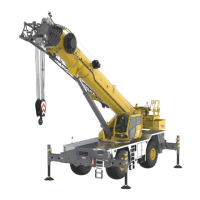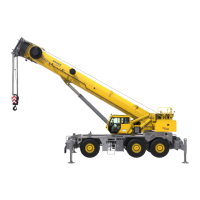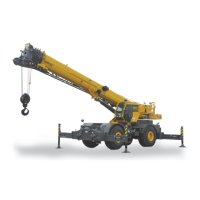8-29
GRT8100 SERVICE MANUAL UNDERCARRIAGE
Published 3/26/2018, Control # 596-05
Outrigger Beam
Description
The outrigger beam assembly consists of an outrigger beam,
a jack cylinder, an extension cylinder, an Outrigger
Monitoring System (OMS) (Optional—Standard in North
America) string potentiometer, and the required hoses and
mounting hardware.
Theory Of Operation
When the outrigger extension is activated, it extends or
retracts the outrigger beam within the outrigger box. The
outrigger beam can be extended to the mid-extend position
by allowing the lock pin to ride on the top of the beam while
it’s extending. The lock pin will automatically drop into the
hole when the beam reaches the mid-extend position.
The Outrigger Monitoring System (OMS) (if equipped) has a
string potentiometer sensor mounted inside each outrigger
box near the fixed end of the extension cylinder. The sensor
is connected to the outrigger beam by a cable to monitor
position of the extension beam—full, half or retracted.
The jack cylinder is mounted to the end of the beam and
applies force to the outrigger beam vertically. This sequence
of events provides for lifting and stabilizing the crane for
operation.
Maintenance
NOTE: Outrigger beam removal and installation is similar
for both the front and rear outriggers beams
(Figure 8-30).
Removal
1. Remove the outrigger beam end cover.
2. Remove the OMS string potentiometer cable (if
equipped) from the attaching point on the outrigger
beam.
NOTE: Avoid free-release of cable to prevent damage to
the OMS string potentiometer caused by over-
range of cable.
3. On the jack cylinder end of the beam, loosen the two
socket head adjustment screws for the wear pads.
4. Extend the outrigger slightly and attach an adequate
lifting device to the outrigger beam (see Figure 8-29).
NOTE: Lifting belts or straps should be used for lifting
purposes so as to avoid nicking or scratching the
bottom edges of the outrigger beam (Figure 8-29).
Outrigger beam assembly, with jack cylinder,
weighs approximately 660 kg (1455 lb).
5. Place adequate blocking material under outrigger beam.
6. Tag and disconnect the hydraulic lines at the cylinder
barrel end of the extension cylinder. Cap all lines and
fittings.
7. Remove the cotter pin and clevis pin securing the
cylinder barrel end of the extension cylinder to the
outrigger housing. Carefully pull the outrigger beam out
of the outrigger box until the extension cylinder is free of
the box and carefully lay the end of the cylinder on the
bottom of the outrigger beam or leave on blocking.
NOTE: Do not allow the end of the outrigger beam cylinder
to fall when the clevis pin is removed. Use blocking
to limit the drop or an adequate soft support to
cushion any distance the rod will drop.
NOTE: OMS string potentiometer may be easily removed
to avoid damage during extension cylinder pin
removal. Refer to Outrigger Monitoring System
(Optional—Standard in North America), page 8-32.
8. Pull the outrigger beam out of the outrigger box, re-
adjusting the lifting attachment to prevent the extension
cylinder from sliding out of the outrigger beam when the
beam clears the outrigger box.
9. Position outrigger beam on blocking material.
Inspection
Inspect outrigger beams for bends, evidence of cracks, or
other damage. Check outrigger beam internally for hydraulic
fluid, which may indicate a leaking cylinder, loose
connection, or damaged hydraulic line.
Installation
1. If removed, install two wear pads into bottom inside of
outrigger box using two socket head screws. Apply anti-
seize compound to the wear pads.
Adjust the two wear pads such that they protrude 5 mm
(0.20 in) inside the outrigger box. This will prevent the
DANGER
Be sure any blocking material used is capable of
supporting the weight of the outrigger beam. Do not allow
it to tilt or slide.
DANGER
Be sure any blocking material used is capable of
supporting outrigger beam weight. Do not allow it to tilt or
slide.
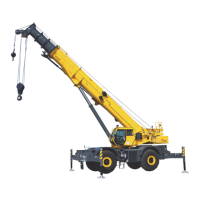
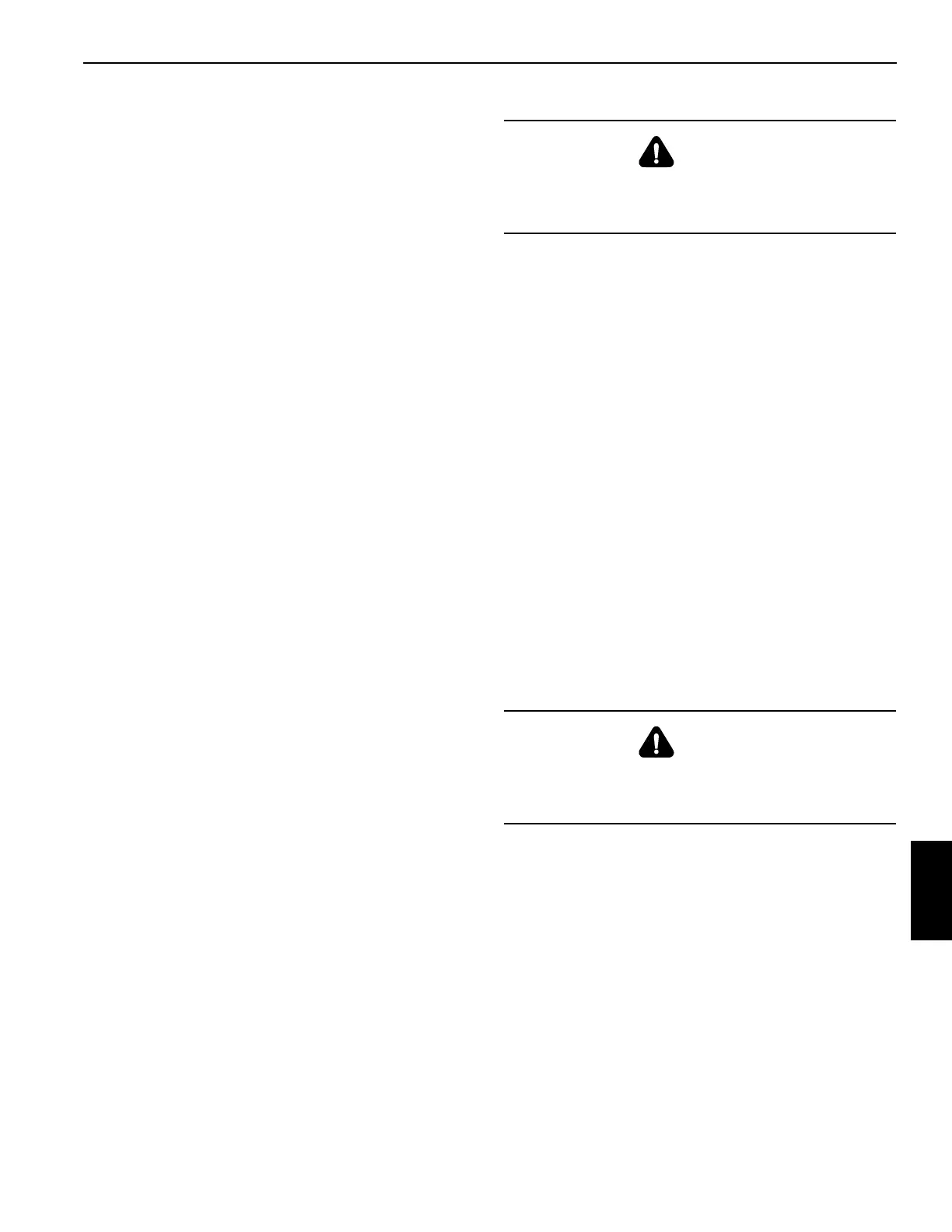